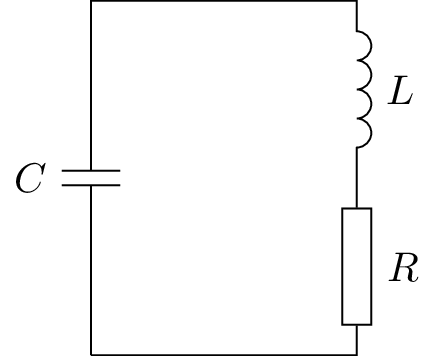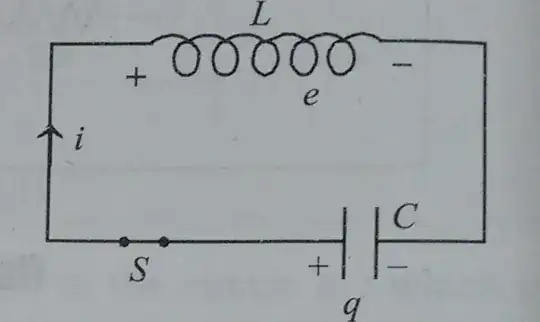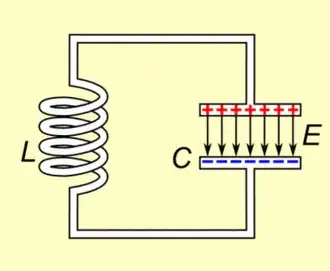Consider a basic RCL-Circuit consisting of an ideal resistor, an ideal capacitor and an ideal inductor in series.
Assume that at time $t = 0$ the current is zero and the capacitor is charged with a charge $Q$.
How do the $\vec{E}$- and $\vec{B}$-fields look like in dependence of the time? I want to know them as vector fields in the conductors and in open region around the entire circuit. An analytic expression would be great, but some plots would suffice.
For the electric field I want to have the total electric field and the components due to changing magnetic field as well as due to surface charges.
I am also interested in the limit $R \to 0$.
Especially the electric field is interesting since it seems to be neglected most of the time. For the answer of the analogous question for more simple circuits see:
- Galli, Goihbarg: Energy transfer in electrical circuits: A qualitative account
- Müller: A semiquantitative treatment of surface charges in DC circuits
- Jefimenko: Demonstration of the Electric Fields of Current-Carrying Conductors
- https://physics.stackexchange.com/a/62166/6581
Edit: In the first version of the question I also wanted to know how to derive everything from Maxwell equations. Since there are no responses up to now, and to focus more on one aspect, I split the question into two. This one of how the fields look like and if it is solved I will pose a second one about how to derive it from Maxwell equations.
Edit 2: The usual high school presentation where only the magnetic field in the solenoid is considered (but no electric field) is clear on that level but incomplete. And especially the case of the electric field seems to be complicated.
I did some research and found papers about electric fields in solenoids but I don't get the information together to a complete picture. So a numerical simulation would be great which includes all relevant details. Here are the papers I found, perhaps this is helpful to write a good answer for someone who understands the papers better than I do:
- http://nsi.snu.ac.kr/php/download.php?board=treatise&idx=38
- http://www.hep.princeton.edu/~mcdonald/examples/solenoid.pdf
And of course the references in the cited papers.
At least I am looking for a qualitative account, which makes the direction of the fields clear. Consider for example Feynman lectures II picture 22-9. Feynman concludes with indirect arguments something about the line integrals $V_i$. However I want to get a direct picture of how the electric fields really are.


